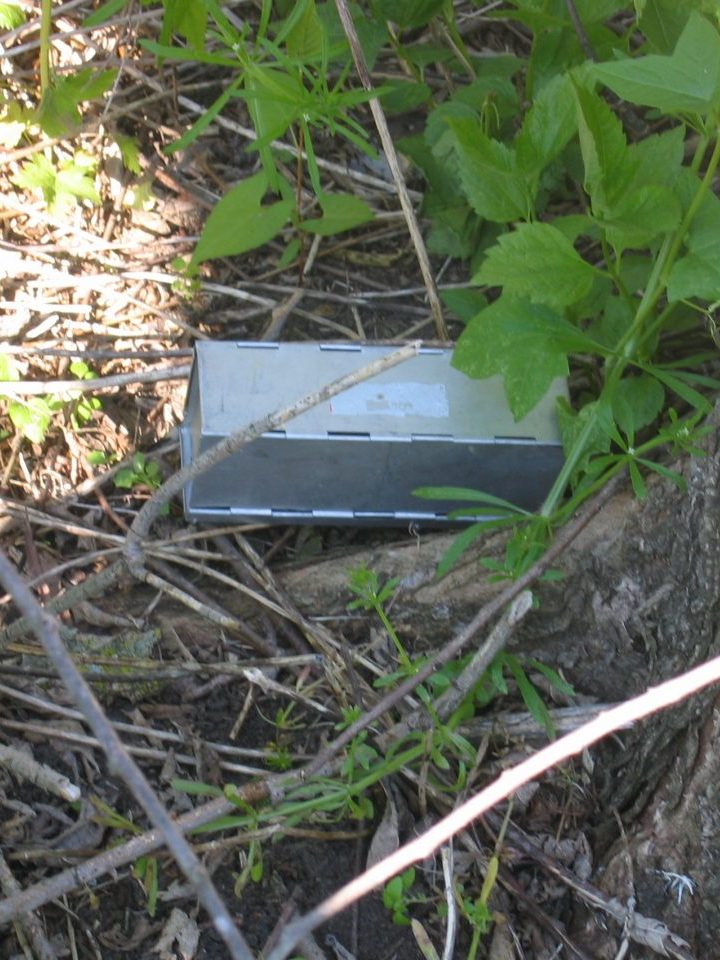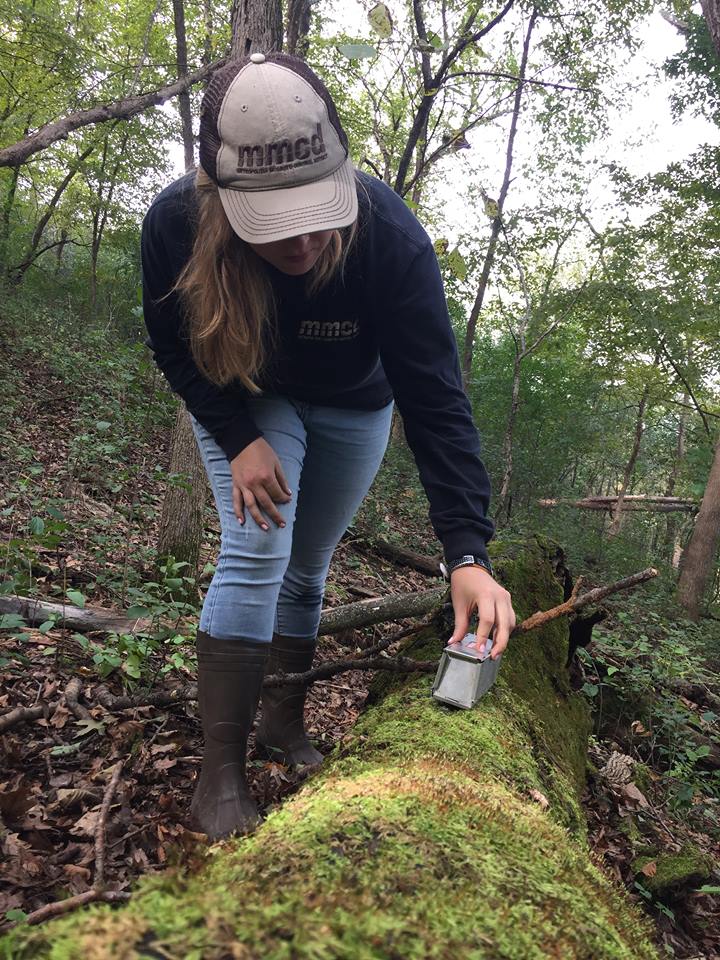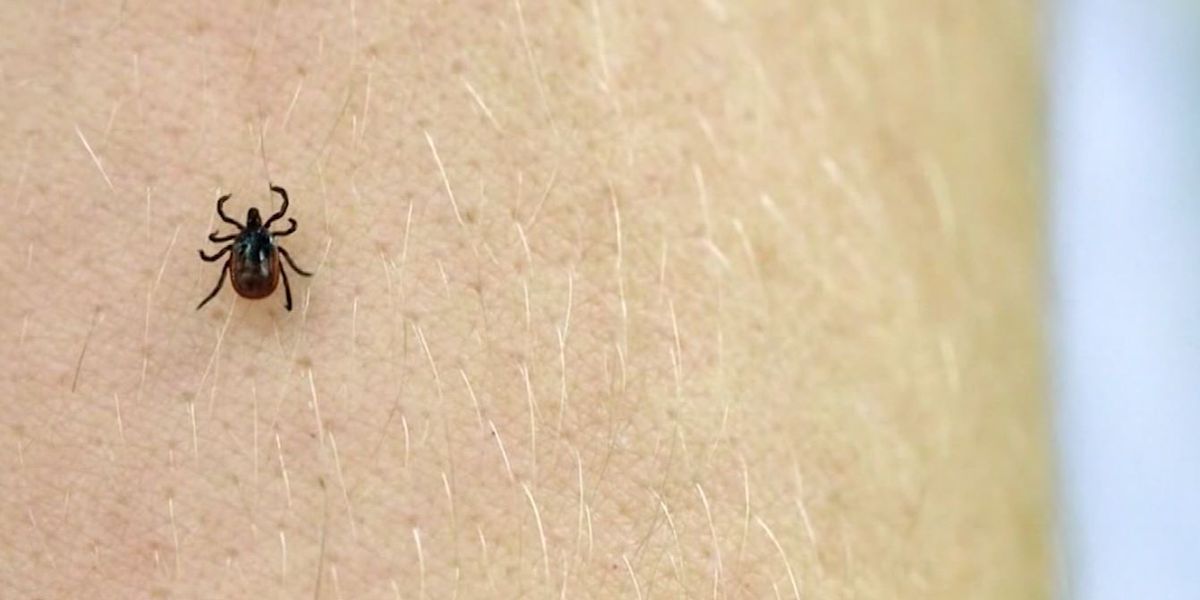
Program Overview
Since 1990 the Metropolitan Mosquito Control District has been performing deer tick surveillance in the seven-county Twin Cities metro area to monitor disease and determine prevalence by county. Each year we release a lyme tick distribution study that analyzes data collected by traps set throughout the summer and other observations by our tick specialist technician.
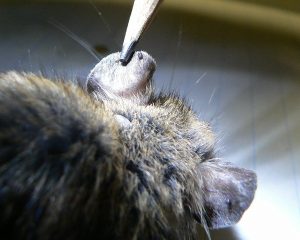
A mouse with ticks from an MMCD study.
Lyme Disease in the Twin Cities
Lyme disease is a bacterial infection transmitted to humans by deer ticks (Ixodes scapularis– official common name is the black legged tick). A Lyme infection can most notably affect the joints, nervous system, and heart. The Metropolitan Mosquito Control District’s Lyme Disease Program identifies and monitors the distribution of deer ticks within the seven-county Twin Cities metropolitan area. The deer tick occurs in northern and eastern Anoka County, northern Ramsey County, and most of Washington County. Isolated populations have also been found in Hennepin, Dakota, Scott, and Carver Counties.
Both wood ticks and deer ticks can be found in the spring and early summer, but wood ticks are generally not disease transmitters in Minnesota. Adult wood ticks have white markings and are mainly out in the spring. Adult deer ticks do not have white markings and are out in both spring and fall. Infected deer tick females can transmit disease as they feed. Male deer ticks do not transmit disease because they generally don’t feed. Sometimes the males do briefly attach to their host, but their attachment time is too short for disease transmission to occur. Although less likely to be infected, the immature deer tick nymph transmits Lyme disease more often than adult ticks because their small size keeps them undetected. Nymphs are most common May – July.
Lyme Cases
Lyme disease is the most commonly diagnosed tick-borne illness in Minnesota each year. Since 2000 the Minnesota Department of Health (MDH) has been consistently tabulating record-setting human tick-borne disease case totals. Their all-time high statewide tabulation occurred in 2013 with 1,431 Lyme cases. Minnesota trends higher than the national average -, according to MDH "in 2017, Minnesota had a rate of 25.2 cases per 100,000 people compared to the national rate of 9.1 cases per 100,000 people."
District Deer Tick Surveillance
The numbers of deer ticks collected and our total number of positive collection sites in our Lyme tick distribution study have been higher than average since 2000, suggesting an upward trend in the local deer tick population. This means greater potential for you to come into contact with deer ticks.
Deer ticks are rarely found in the core cities of the metro area, but in the fall of 2008 MMCD received two independent credible reports of deer ticks being found along the Mississippi River in the cities of Minneapolis and Saint Paul. In each case the tick was found on a dog. Both areas were intensely surveyed by MMCD, but no additional ticks were found.

Relative size of a deer tick nymph.
Other Diseases
Human Anaplasmosis (HA) is a bacterial disease that is potentially fatal, though the vast majority of people who receive treatment (antibiotics) recover. People are exposed to HA most frequently in central Minnesota, but a few exposures have been documented in the Twin Cities area since 2000. HA had been detected in small mammals in MMCD’s collaborative research beginning in 1995.
Babesiosis is a rare disease that is caused by protozoa, not bacteria. Both diseases, like Lyme disease, begin with flu-like symptoms.
Cases: Infection with HA occurs at a lower rate than Lyme disease in Minnesota each year and it is the second most common Minnesota tick-borne illness. Typically in Minnesota HA case totals are ranging from 400-700 or more yearly. The MDH counted 322 cases in 2007 and HA case numbers had ranged from 78 to 186 from 2000 to 2006 compared with an average of roughly 15 cases per year before the year 2000. Babesiosis cases used to average fewer than 10 cases per year but in recent years the MDH has tabulated more than 30 cases.
Although Lyme disease is more common, deer ticks can simultaneously carry more than one disease.
Other Ticks
If you find an unusual tick or collect a tick in an unusual place, MMCD is interested in knowing about it!
Please mail us the tick so we can track these unusual tick collections.
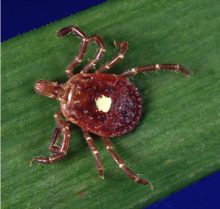 Lone Star Ticks
Lone Star Ticks
Lone star ticks are aggressive human biters and have been found by us or submitted to us from the public on a rare, sporadic basis since we began our tick work in 1990. In spring of 2009 the Minnesota Department of Health (MDH) informed MMCD of an Amblyomma americanum (Lone star tick) submission to MDH, most likely from Theodore Wirth Park in Minneapolis. The tick was found on a dog. Subsequent sampling by MMCD in Theodore Wirth Park did not turn up additional Lone star ticks. In summer 2009 a tick mailed to MMCD for tick identification was another Lone star tick. It had been picked up in the Circle Pines area. It was very unusual to receive two Lone star tick reports in one year. Lone star ticks can transmit human monocytic ehrlichiosis (HME) and although both the Lone star tick and HME are more common to the southern U.S. the Lone star tick range is known to be moving northward.
Asian longhorned ticks
The variety, or type, of Asian longhorned tick that has been introduced into the United States is parthenogenetic, which means it reproduces itself without needing to mate. Therefore, an introduction of a single tick into an area would likely cause a quick population increase and could potentially cause the Asian longhorned tick to become established. Another type of this tick species reproduces via mating, and a different variety is capable of reproducing either via mating or parthenogenetically. These latter two forms of the tick have not been introduced into the US as far as we know.
The Asian longhorned tick was first detected in New Jersey in the fall of 2017 and is now known to have been in the US since at least 2010. It's been found mostly on the eastern seaboard but has also been detected in Arkansas. This tick spreads many tick-borne diseases in other countries, although none so far have tested tick-borne disease positive here. Its principle host is cattle but it does feed on many different mammal species. In the US it's known to have fed on sheep, goats, horses, and cattle, and has also been collected from wildlife including raccoon, opossum, and deer. It has the potential to feed on humans as well.
The “good news” for Minnesota is that there is some question as to temperatures and survivability for this parthenogenetic type of the Asian longhorned tick. The lowest temperatures the parthenogenetic form is known to be able to withstand is 14°F. Whether it can survive in lower temperatures is unknown. Yet another plus for our Minnesota winters! Also, temperatures in the range of 81°F - 86°F and higher are detrimental to egg development of the parthogenetic type of longhorned tick.
Here is the Asian longhorned tick side of our Asian longhorned/Lone star tick card:
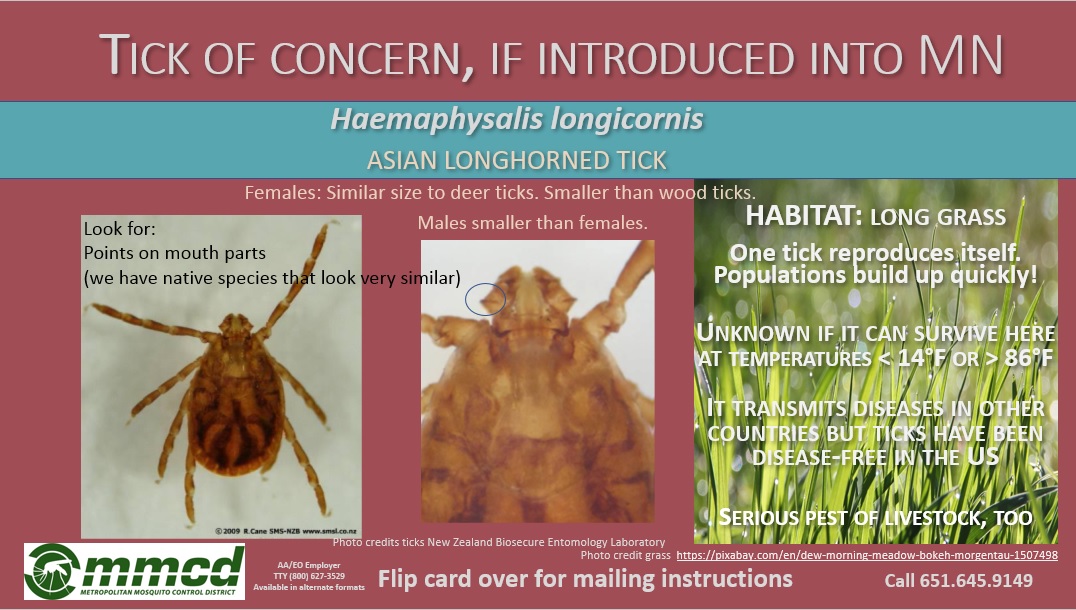
MMCD will I.D. Your Tick! Here’s How:
- If your tick has potentially fed (contains blood) call 651-643-8384 for further instruction or place it into a hard container such as a film container or pill bottle before continuing to follow these directions.
- Ensure the tick is killed prior to mailing — store tick in rubbing alcohol for approximately one day to make sure it’s dead.
- Wrap the tick in some tissue or paper toweling and lightly soak the package in water or rubbing alcohol. We want the tick to arrive slightly damp.
- Place your package in a re-sealable plastic bag such as a sandwich bag.
- Enclose your name, address, and a daytime phone number.
- Place in a padded envelope and either mail it or drop it off at our office.
We will try to phone you the same day we receive your sample.
Mail To:
Metropolitan Mosquito Control District
Attn: Tick Lab
2099 University Ave. West
St. Paul, MN 55104
The most effective tick control measure is public education. Call 651-645-9149 or email our Lyme tick specialist to find out how to reduce ticks in your yard or to get answers to your tick-borne disease questions!

Prevent Lyme Disease
- When in deer tick habitat, stick to the center of the trail. Deer ticks hide out in dense underbrush.
- Wear light colored clothes so ticks are visible.
- Use insect repellent. Follow label directions.
- After being in the woods, do a complete body check, shower and vigorously towel dry.
- Save activities like brush-cutting for August when all stages of deer ticks are at their lowest numbers.
- Carefully check your kids.
- Also check your pets for ticks.

